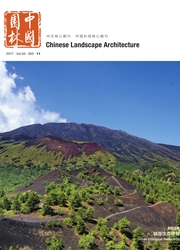

 中文摘要:
中文摘要:
中国越来越多的城市兴建城市高架桥来解决交通拥堵问题,但随之也产生了更多附属的桥下空间。如何积极有效地利用这些被桥面覆盖而导致的光照不足、雨水缺乏、噪声、空气污染等不利条件的城市公共空间成为一个挑战课题。国内最常见的利用方式之一是桥阴绿化,但采光不足是限制桥阴植物品种利用的主要原因之一。利用Ecotect Analysis软件分析武汉市5座样本高架桥下绿地的自然光环境变化规律,发现高架桥的桥体走向、桥下净空的高宽比是影响桥阴绿地自然光环境的2个主要因子。在了解桥阴自然光分布规律的基础上,提出将PAR分布与耐阴植物的需光特性进行匹配,以此满足桥阴植物正常生长的自然光需求,为桥阴绿地中更丰富的合理绿化配置提供参考。
 英文摘要:
英文摘要:
Urban viaducts are being constructed in more and more big cites in China to solve traffic jam, but more affiliated spaces under viaducts arises. It is challenging to figure out how to actively and effectively utilize the urban public spaces undergoing insufficient light, insufficient rainwater, noise, air pollution and the like due to the covering from the viaducts. Shaded green space under viaduct is one of the most common ways in China, but insufficient light limits the utilization of the plants in shaded green space under viaduct. This paper analyzed the variation vales of the natural light environments in green spaces under five sampled viaducts in Wuhan by Ecotect Analysis software, and found that the position of the viaduct and the height-width ratio of the pure space under viaduct are the two major factors which influenced the natural light environment of the shaded space under viaduct. By finding the distribution rule of the natural light in the space under viaduct, a comparison is made between PAR (photosynthetically active radiation) and light requirement character of the shade plant in order to meet the requirement of the normal growth of the plant under viaduct under the natural light, and a reference is provided for the richer reasonable configuration on greening in the shaded green space under viaduct.
 同期刊论文项目
同期刊论文项目
 同项目期刊论文
同项目期刊论文
 期刊信息
期刊信息
